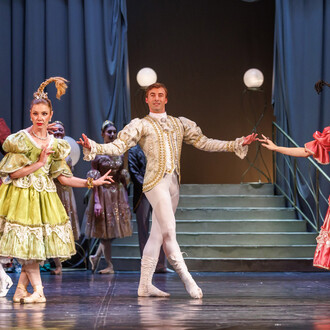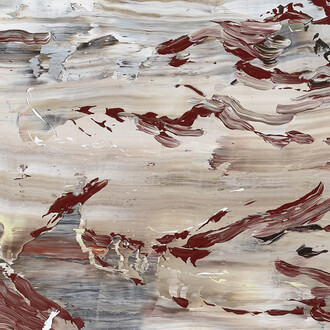SpazioA is proud to present on Saturday, 18 January 2025, Colonne, Chiara Camoni’s seventh solo show at the gallery.
Trees in the forest.
Bodies of Korai.
A central nave.
Columns along the patio.
Fallen angels.
A garden.
Snakes.
The indifferent gaze, the flow of the mind.
The Medusa’s head.
Medusas and snakes.
The bodies piled up, the bodies
thrown away.
Sculpture becomes architecture,
becomes space. Becomes
Body. Perhaps flesh.
Material is intelligent, Laura Tripaldi writes. Material
informs us. It tells me things. Shows me
Shapes. Gives me the time
for certainties and for ruins.
The tree opens and lights come out,
Annie Dillard says.
We’re in an endless slaughter.
All we can become
is indifferent.
As indifferent as the world itself.
Or else, because of our morals,
turn the beetle on its back over
to keep it alive.
Some column sculptures in the gallery create an inner
space and an outer space.
Hieratic and absolute, the figures gaze beyond us,
guarding certainties. Maybe even be communicating
with one another. We know not what.
There’s a protean being, a Medusa with many snakes
or many tentacles. Chaos of bodies and material.
Certainties dissolve. Beauty and Terror.
(Chiara Camoni, Fabbiano, November 25, 2024)
Dear Chiara,
ust the other day, after you’d asked me to keep company with my words to yours, I happened to read letters that testify to the long friendship between Helen Frankenthaler and Anne Truitt.
I’d just seen one of Truitt’s sculptures in Florence, a parallelepiped painted all four sides of such pale color it seemed to fade right into the air, a column that truly proved the artist’s idea that she could make ‘sculptures as swollen as the columns of the Parthenon.’
This phrase brought you to mind so I sent it. Frankenthaler and Truitt’s correspondence is beautiful: quick—time is always just so short (we know that too)—their exchanges deal with work, daily life, shows, daughters, homes, friends, of time that passes by.
In an extract from the volume of her diary published posthumously, Anne Truitt writes: “if I made a sculpture it would just stand there and time would roll over its head and the light would come and the light would go and it would be continuously revealed.”
That made me think of your Colonne, too. Modelled whole, as if vases of some kind, the Korai were then cut for firing in the kiln, re-assembled, and become architecture, the frame of a house or a temple. Gazing beyond us, their lips are sealed. They inhabit a time much older, more enduring than ours. They recall the lionesses and sphinxes you once placed as thresholds to one of your shows, as if to say: “Beware! From here you step into a space that belongs to Sculpture.”
What does looking with all my senses mean, I wondered, passing through the gallery mingling with the columns? This summer we read another Annie (it’s funny how this name keeps reoccurring in our inclinations: Annie Dillard, Anne Truitt, Annie Ernaux, Anni Albers, Hannah Arendt, your daughter, Anna).
I couldn’t find the passage I was looking for, but perhaps you’ll remember: Dillard writes of a walk she took in a wood near her house when she suddenly felt she needed to stand absolutely still. Not out of fear, but just to resemble the woods opening up around her.
If you want to understand it—she seems to imply—you need to be part of it. To understand the living, you need to be pierced by its gaze. This can also be a dangerous exercise: in another story, Anne Dillard describes a flame devouring a moth: the two forms compenetrate, and it’s hard to tell the image’s beauty from its horror. Something like this takes place in your show, at which you decide to juxtapose with a forest made of stone a sculpture, an inchoate figure, a head of a Medusa, which you addressed as a body that has been thrown: the other extremity, the opposite of the perfection, the eternity, and the verticality of your Colonne.
The other extreme is still an attempt at giving shape or, resuming your metaphor, getting the beetle back up on its feet, as you have done elsewhere, drawing a flower every day and filming your family in the seemingly senseless yet necessary act of responding to the destruction of the landscape with beauty, celebration, color. There’s not much else to do but to keep eyes wide open and stubbornly remain open to wonder.
(Text by Cecilia Canziani)












